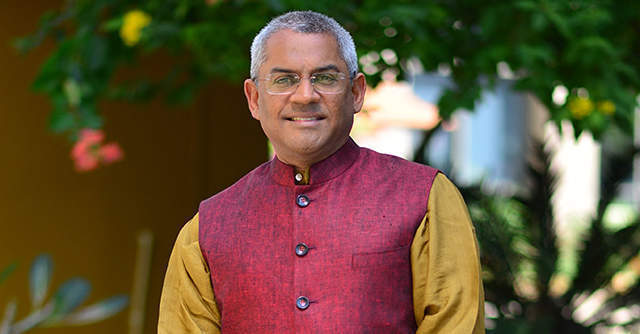
Outlook 2020: Why venture capitalists should look to the next year with hope


There are broadly three factors why venture capitalists should look to 2020 with hope.
First, at a macro level, we see a large number of startups in India begin to focus on the fundamentals -- rate of the growth of business, revenue generation, customer acquisition, unit economics and more -- especially in the B2B and B2B2C segments. The idea of digitalisation that started in telecom and moved to banking is now expanding to many more sectors. That trend is still very early days. A set of factors, including growing connectivity, smartphone penetration and data adoption, have resulted in establishing business use cases for many of these sectors.
Business SaaS (software-as-a-service) in India is coming of age now. Small and mid-size enterprises and corporates are starting to spend money on SaaS products. The earlier mindset that India did not have a large enough or deep enough market for SaaS is starting to change.

Second, the calibre of entrepreneurs has improved. More well thought through businesses are emerging and entrepreneurs are setting audacious goals. We are seeing high-quality entrepreneurs who have experience working with the first wave of internet companies such as Flipkart or Paytm or with other larger companies such as Amazon. They have seen scale.
We are starting to see companies that are breaking the $10-20 million revenue barrier pretty quickly. India was completely uncharted territory historically. Companies had to spend many years domestically or go international if they had to reach those kinds of revenues. But now the domestic market has really opened up for our entrepreneurs to create large businesses.
Third is the access to capital. Capital follows opportunity and this market continues to create opportunities that excite investors.

Besides these, Indian businesses and consumers are starting to realise the importance and value of these internet services. Platforms and initiatives like IndiaStack and Aadhaar are maturing along with policy reforms. Digitisation is happening at a very fast pace and at a large scale. The opportunities for startups in this space is significant. Not just startups, the incumbents are also waking up. Those uncertainties around market size, opportunity and product market fit that used to be there are now vanishing.
We are very excited and bullish about what we are going to do in the next 12 months.
Fintech remains a core focus
Our focus on fintech will absolutely continue. Fintech and financial services in general and the intersection of technology with other domains will remain priority interest. Our underlying theme has always been that we are big believers of digitisation and that technology companies can make a material contribution and earn a strong share across industries. Wherever we see digitisation playing a key role, we are happy to get involved. As fund, we look for digital solutions.
Bankable micro markets

We look for businesses that have strong differentiators and attractive unit economics. Heavy spending on customer acquisition doesn’t make sense for us. Historically in India, B2B and B2B2C companies fall under this, while all others have been fairly capital intensive companies. It’s not like we do not want to do B2C. Whenever we see an opportunity to do a good consumer play with smart unit economics, smart distribution and customer acquisition strategy, we look at that. We do have a few in our portfolio already.
Historically, to build a large market in India, we need to target a large population. However, the scenario has changed and now you can target even smaller segments. I think we are starting to see a new wave of startups in India where they will be targeting micro markets with high distribution and customer acquisition strategies.
First institutional cheque
Broadly, no fundamental changes are expected in our modus operandi.

We typically do 3-5 deals a year and that will continue. Our ticket sizes are in the $750,000-$1.5 million range. This continues to be our sweet spot.
We also do follow-on rounds, but that depends on the portfolio. We would like to write the first institutional cheques, relatively meaningful cheques, have very deep commitment with full conviction on investors -- that will continue to be our model.
Culture, grit and capital efficiency

How we pick the companies we work with and how entrepreneurs choose to work with us is something that's a little more of a science now. It’s evolving, but we have set some parameters that are very important to us.
The innovation can be valuable only if it’s distributed well. The importance of distribution is something that we probably weren’t focusing much on some seven years ago when we started. But now it’s a strong area of focus for us.
How much the founders care about the culture aspect is now becoming more important in our evaluation criteria. Generally when we are investing, we are not questioning if there is a market, but whether this company could pull it off. That means we look for founders with strong differentiation and insights about the market and opportunities, which is not something that you can read and learn in a book. We should be able to trust the founders to make a good and sensible decision when surprises occur in operations. There needs to have some X factor among the founding team. And, of course, huge market. We cannot take market size risk.

The third big learning is capital efficiency. Capital efficiency is about knowing when to spend the money exactly. And this should start from day one. So, this judgment call is very important to us.
Shortage of capital
There is certainly a shortage of capital in this market, and also a shortage of quality capital. There is plenty of room for people to come and I fully expect them to come. That is not to imply that the market will get inflated. We are probably producing the most number of startups in the world right now. There are just about 5-10 players doing Series A or Series B investments in India, and that’s way too small for a market of this size.
We probably have just five players at the Series D stage. Generally, in the venture capital business, you don’t back any competitor of yours (of portfolio companies). If there is an attractive space and every growth-stage investor would have had one or two investments in that space, and then only very few people who actually have a right fit in their portfolio.
The single biggest hole in the market is Series B. There is a good amount of players and capital chasing Series A deals, but Series B is a gap. It is a heavy undercapitalised. If somebody comes with a Series B-only fund, I think there’s a huge opportunity. I expect to see a lot more investors in pure Series B funds.
The opportunity cost of staying alive as a startup
There are multiple hot areas in business. For example, neo-banking is seen as a hot area one and there are several companies starting up. But eventually, things will get clarified and the breakouts will be identified. If I’m an entrepreneur and not one of the breakouts, I can pursue the domain because I’m passionate about it or I can forget about this domain and do something new. So their potential to get acqui-hired into a company as they are passionate about this space is bound to happen. They can thus capitalise something from it. Some make it and some don’t.
I think what will happen is that we will go to a more rapid cycle. One of the nice things about Silicon Valley is that entrepreneurs are always looking at what is the opportunity cost of my being alive as a startup. In India, historically, we have always said keep going, survive, get into some services and the like. That still prevails. However, as the product DNA comes in, people realise that they won’t make it and therefore, I would pack up and move on. That might mean selling assets or shutting down. We will start seeing that a lot more.
One of the large trends coming in the next 24 months is that we will start seeing a lot more of startups shutting down and founders choosing to either work with other startups or going back to new ideas.
To conclude, it’s a cycle of evolution and maturing of a market. People will start realising that opportunities to win in the market are more significant than being an also-ran in these cases. If they are unable to be a winner in one particular space, it is better to shut down and start again after some time, than to just try to hang in there and hope that the winner is going to fumble in their execution.
The winner doesn’t mean that it is one company -- it’s a handful of companies. If there are 20 companies in a space and three of them are really firing on all cylinders, then investors will hesitate to back anybody else. So shutdowns or business pivots are the natural result of this. Your life is way too valuable to be spending so much time for so little to show. You need to put a stake in the ground and decide if you are not able to show a strong uptick by a certain time, you should not be pursuing this as a standalone company. That culture and that DNA has to happen, that is not yet there. It’s early days, we see it occasionally.

Sanjay Swamy
Sanjay Swamy is managing partner at fintech and financial-services focused venture capital fund Prime Venture Partners. The views in this article are his own.
